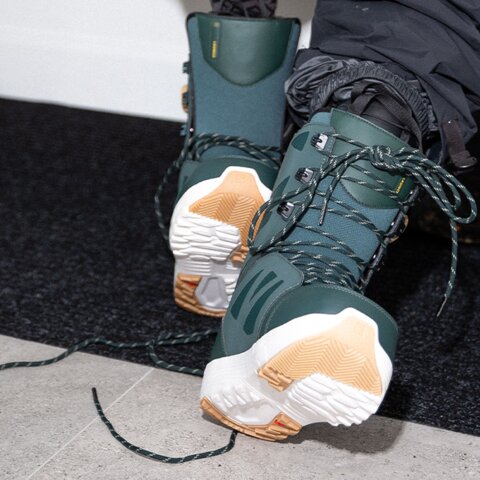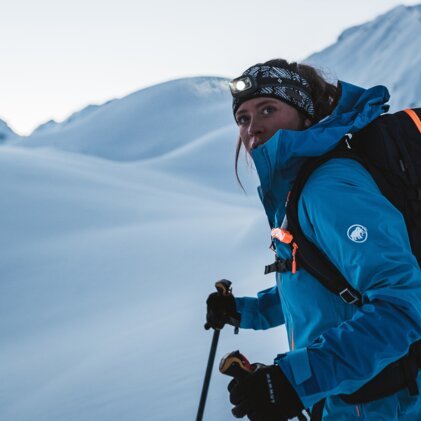Become a snowboard binding pro in no time at all.
If you want to stand with both feet firmly on the snowboard and have equally fun riding the slopes, park and powder, you should buckle up and listen carefully. In addition to the right snowboard and boots, the corresponding snowboard bindings are often neglected. However, the matching snowboard binding is crucial for a great performance in the snow! As the name suggests, it binds your boots to the board.
A major point about snowboard bindings is, that they are responsible for how well your movements are transferred to the board. In the end they play big role when it comes to how much fun you ultimately have shredding. For this reason, it is important to keep the following topics in mind.
- Does the snowboard binding match my ability?
- Does the binding system correspond to what I intend to do with it?
- Has everything been set correctly?
Within this post we take a deep dive at the most common options for soft boots. If you ride hard boots, you will definitely need some matching hard boot bindings. Our snow board specialists have summarised the above points and everything else you need to know about snowboard bindings. Let us take a closer look.
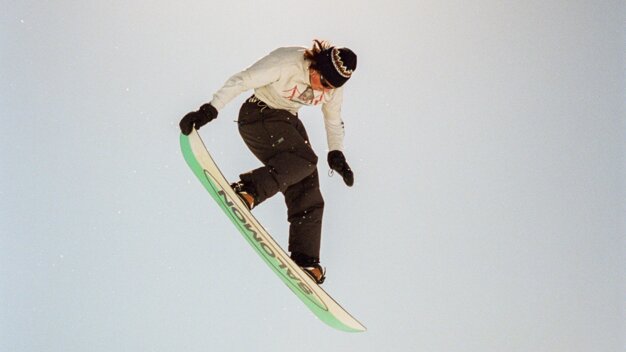
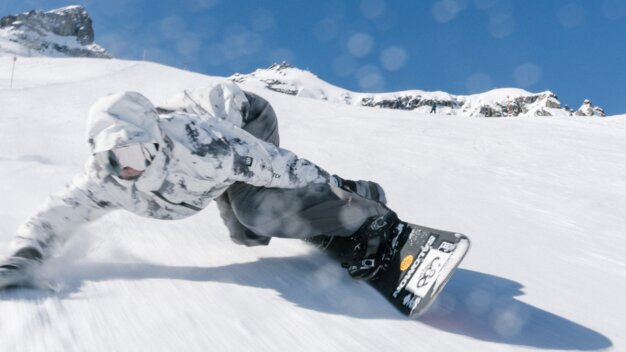
The parts that make up a snowboard binding are as follows
Before we really get into the subject, a little sidetrip. Below we have broken down a snowboard binding into its individual parts. This will give you a good overview of its functions:
- Baseplate or chassis: The bottom frame is the central element of the binding and is largely responsible for power transmission. It is the only component that is directly connected to the snowboard via the mounting point provided for this purpose. You can also use the baseplate to adjust the width or angle of your stance.
- Footbed: The footbed is part of the baseplate. They are often made of foam, which improves the comfort while riding. The padded sole also provides cushioning in the event of impacts.
- Highback: This is the part of the binding that supports the underside of your calves. It’s performance is based on the material and height. The highback varies in height, can often be tilted and is therefore a decisive factor for power transmission. High highbacks made of hard materials, for example, ensure a low flex and direct power transmission, which is why they are suitable for going off-piste and tough conditions. Soft and short highbacks, on the other hand, are favoured by beginners and park riders as they offer plenty of freedom of movement.
- Heelcup: The heelcup sits on the heel and connects the baseplate and highback. It ensures that the foot remains securely in the binding and gives the highback additional support.
- Straps & Straps: The classic bindings have two straps - one on the toes (toe strap) and one in the ankle area (ankle strap). Fixed accordingly, they guarantee optimum support for the heel cup and baseplate.
- Disc: One part of the baseplate is the disc, which sits right in between the baseplate. The disc itself has holes for screws in it to secure a tight connection to the dedicated mounting points on the board.
These types of snowboard bindings exist
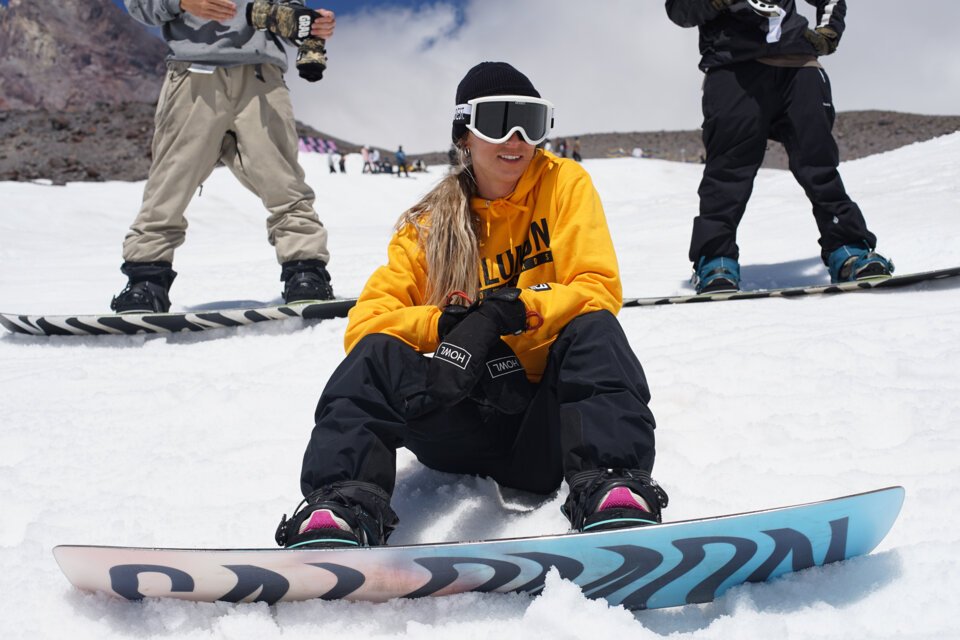
Now that we've looked at the components of a snowboard binding, let's take a look at the types of bindings. First of all, it's important to remember that it's not just about looks! The focus should always be on performance. Think in advance about what requirements the binding needs to fulfil. Then decide which type of binding is right for you.
- Two-Strap bindings: This classic type of binding can be opened and closed using straps (usually 2 pieces). Simply step into the previously opened binding with your snowboard boots and secure the boot with the straps.
- Easy/Speed Entry/Rear Entry bindings: Thanks to this binding system, you can get in and out of the bindings particularly quickly. Simply fold down the highback and get in or out via the back, fold it back and you're done! Conveniently, you can simply leave the strap settings as they are. Normal entry is also possible with an easy-entry binding.
- Step-On bindings (or Step-In bindings): This is the latest invention on the binding market. Step-On bindings have no straps. Instead, you "click in" via designated connection points. Important: You need the right Step-On boots for this.
- Splitboard bindings: It wasn't so long ago that the first splitboards reached the peaks of the world. A corresponding splitboard binding can be adjusted on the board so that you are facing forwards during the ascent – just like skiers do. There is also a climbing mode for steep terrain plus additional freedom of movement once switched into walking mode. Once you reached the peak everything will be set to downhill mode, and you can enjoy the descent.
Tip: When buying the binding, make sure that the system is compatible with the attachment points of your snowboard!
What is flex on a snowboard binding and how do I choose?
Flex is a term that you come across time and again in the world of winter sports. This is a non-standardised value that describes the flexibility and degree of stiffness of a binding – or the material it is made of. Depending on the flex, a binding has different properties. These in turn determine which skiing style and level the binding is suitable for.
The categorisation hard - medium - soft is done on a scale from 1 to 10:
- Soft (1-4): forgives mistakes, ideal for beginners as well as for park use and jibbing, more freedom of movement
- Medium (4-6): versatile: flexible yet stiff enough, best suited for advanced and all-mountain boarders
- Hard (6-10): gives maximum control, ideal for high-speed riding and freeriding, this binding holds on tight to your boot for more direct power transmission between boot, binding and board
Although the flex is not standardised, it serves as a good indicator for comparing different bindings, at least within a brand's range.
Slope, park, powder: Which binding for which style?
As you have already seen, there are different binding systems and aspects that determine the performance you get out of your binding. The question remains as to which features are compatible with which requirements. You should therefore think about this in advance:
- What is your riding level (beginner, intermediate, professional)
- Where do you see yourself riding (park, slope, powder, a bit of everything)
- What is your style like (playful/tricky, normal, aggressive, high speed and always on the edge)
These questions should give you a good indication for which direction to take. A beginner for example is unlikely to have fun buying an extremely hard binding for off-piste riding. Let's take a closer look at the categories:
- Bindings for beginners: Beginners are safest in bindings with a soft flex. The reason: they are particularly forgiving of mistakes and offer a wide range of movement.
- All-mountain bindings: Slope today, park tomorrow, off-piste the day after. If you're a multi-talent, opt for an all-mountain binding. With a medium flex, you can perform in any environment.
- Freeride bindings: Freeriding is your passion? Do you want direct feedback from the board and every turn to be as precise as possible? Then a freeride binding with a hard flex will give you the stability you need in waist deep powder and alpine terrain.
- Freestyle bindings: A flexible highback and a soft flex ensure plenty of freedom of movement in the binding. For kickers and tricks in the park and on rails, you should choose a suitable freestyle binding that offers you a secure hold combined with plenty of flexibility.
- Bindings for splitboards: If touring with a splitboard is going to be your next passion, you will need a splitboard binding – the Voilé system is probably the most common one, although other brands also have their own systems.
- Alpine (hardboot) bindings: An alpine binding is ideal for carving at high speeds. They are similar to ski bindings and are characterised by the best edge grip and optimum power transmission. But: You need hardboots for this.
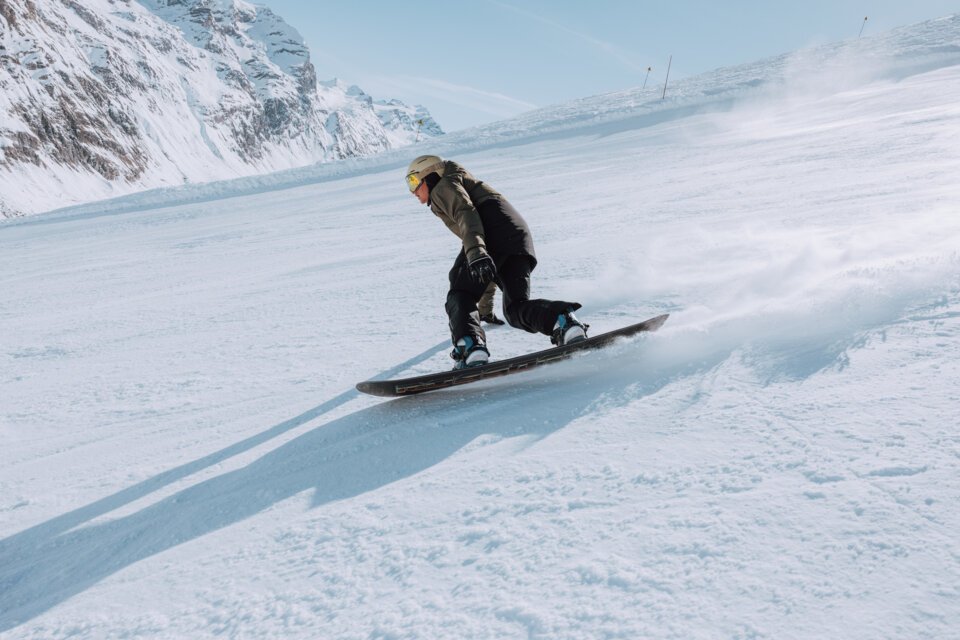
Does every shoe fit in every binding?
If you already have a snowboard boot that is not only the right size but also comfortable enough to wear, you don't necessarily want to change it just because you're buying new snowboard bindings. Fortunately, this is rarely the case. The reason for this is that most soft boots are compatible with the majority of strap-in and easy-entry bindings – regardless of the brand.
However, things get a little more complicated with the step-on bindings that Burton shook up the market with some time ago. However, in order to benefit from the system, the binding and boot must fit together 100 %. In contrast to Easy and Strap-in bindings, there are no straps to press your soft boot against the base plate and highback. With the step-on binding, the binding is fixed via three snap-in points: On the heel and on the left and right in the transition area between the toes and midfoot. In this case, there are no straps.
But do all snowboard bindings fit all boards?
Basically, almost every snowboard is compatible with almost every binding, as the holes on the board and disc are standardised.
Depending on which board you ride, you have one of the following systems to choose from:
- 2x4
- 4x4
- EST, 3D Insert & Channel
For the first two systems, the values refer to the space (in cm) between the attachment points. You can then use the corresponding discs on your snowboard boot to adjust the binding to your liking.
Things get a little more complicated with EST, 3D Insert and Channel snowboard bindings. These are special systems where only a corresponding EST binding fits on a board with the EST attachment points. The same applies to the remaining two systems. But keep in mind: Just because the binding isn’t compatible with any soft boot does not mean that they are bad. It just means that the bindings have a special usage profile and have been customised for it.
Adjusting snowboard bindings: How to proceed
Now that you've gathered all the information about your new snowboard bindings, the whole thing still needs to be set up correctly. But don't worry: It's not rocket science. Your RENTertainers have taken on the topic of "Adjusting snowboard bindings" and provided you with instructions. Have fun setting them up.
Snowboard accessories: What you need
It often doesn't end with the board, bindings and snowboard boots. One thing you should always consider is protector clothing, which can include an avalanche backpack or a back protector as well as a helmet. Think in advance about what equipment you need for your adventure on the mountain. If you want to enjoy powder turns with your splitboard, you should also have poles with you, for example, and ideally have enough space in or on your backpack to attach them.




